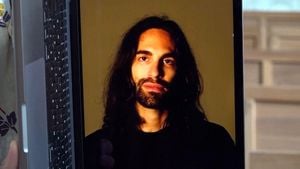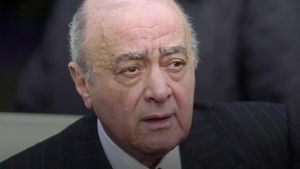Australia has carved out its place on the global stage with its recent passage of groundbreaking legislation aimed at banning social media access for children under the age of 16. This decision, hailed as one of the toughest measures against social media platforms, aims to shield the youth from the potential dangers lurking online. The move has sparked extensive debate, garnering both support and backlash from various stakeholders including tech companies, government officials, and the public.
The legislation, passed by Australian lawmakers, holds platforms like TikTok, Facebook, Snapchat, Instagram, and Reddit accountable. If they fail to enforce the ban effectively, they could face severe penalties—fines reaching up to 50 million Australian dollars (approximately 32 million US dollars). This measure places Australia among the leaders seeking to create safe online environments for children, but it also poses significant challenges, including questions about enforcement and compliance.
Prime Minister Anthony Albanese championed the legislation, emphasizing the need for children to spend less time on their devices and more time engaging in physical activities such as sports. During his remarks, he stated, “We want Australian children to have a childhood,” framing the ban not just as regulatory action, but as part of broader societal responsibilities. The Prime Minister’s office conveyed the message to parents: “We’ve got your back.”
Despite the measure’s apparent popularity, with 77% of Australians supporting the move according to reports, major tech companies have voiced strong concerns over its practicality. Meta, which owns Facebook and Instagram, described the legislation as “rushed” and lacking sufficient consideration of existing industry practices. They highlighted the lack of clarity concerning how compliance would be measured and enforced, raising doubts about the feasibility of age verification methods without compromising user privacy.
Snapchat's representatives echoed these sentiments by insisting the legislation contains numerous unanswered questions about its execution. Similarly, TikTok warned of significant unintended consequences, stating, “It’s entirely likely the ban could see young people pushed to darker corners of the internet where no community guidelines, safety tools, or protections exist.” This concern signals the potential risk of driving underage users to less regulated online environments.
The specifics of how the ban will be enforced remain vague. A pilot program is set to kick off next January, allowing the government to trial various enforcement techniques before the full implementation is set to occur later. Notably, the legislation does not permit platforms to mandate government identification from users—presenting inherent challenges to authentic age verification. The approach being taken indicates the government’s intention to avoid burdening young users or their parents with penalties for violations.
While most political factions support the ban, critics, including Green Party Senator Sarah Hanson-Young, argue the legislation is misguided and stems from policymakers’ misunderstandings about how youth interact with the internet. She remarked, “It’s boomers trying to tell young people how the internet should work,” articulately expressing skepticism toward the bill’s intent and design.
Looking beyond Australia's borders, the legislation holds broader significance as countries around the globe weigh similar measures. Legislative efforts have emerged recently worldwide, reflecting growing alarm about the negative impacts of unrestricted social media use by minors. For example, Spain has proposed raising the minimum age for social media platforms from 14 to 16, and discussions around similar restrictions have also taken place within the United States and parts of Europe.
Privacy advocacy groups, like Unicef, have also highlighted the risks associated with banning access rather than holding tech companies accountable for providing safe and age-appropriate environments. They suggest strategies should focus on enhancing digital literacy among children and their parents, improving online safety tools, and fine-tuning algorithms to mitigate harmful content instead of outright bans.
The global reactions to Australia’s landmark legislation are closely monitored as the international community grapples with how best to protect children online. Critics warn of the social isolation potential from the ban, particularly among vulnerable youth who utilize social media for social interaction, support, and education. Placing age restrictions could cut off these young individuals from valuable resources and contact with peers.
Despite these varied perspectives, the strong governmental push signifies Australia’s commitment to tackling the pressing issues of child safety and mental health linked with social media usage. With the legislation set to disrupt existing practices among tech firms, all eyes will be on the subsequent steps to effectively enforce these measures and assess their impacts on the youth culture and the digital marketplace.
Whether or not the Australian model will inspire other nations to implement similar policies remains uncertain, but the level of attention garnered suggests significant global interest. Future months will likely reveal how rigidly the law is applied and whether it actually leads to substantial improvements in the online safety of minors or inadvertently pushes them to less safe areas of the digital world.
For the youth, the digital age remains unavoidable, yet Australia's bold attempt to steer it toward safer paths reflects larger societal quests for balance between technology's benefits and its potential harms.



